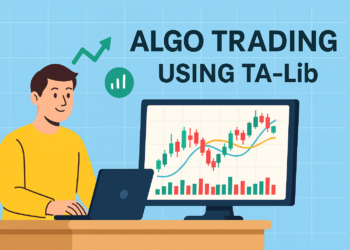Trading in financial markets is both an art and a science. Successful traders rely on various market analysis techniques to make informed decisions. The two primary methods of market analysis are fundamental analysis and technical analysis. While this blog will touch upon both approaches, the primary focus will be on technical analysis, as it plays a crucial role in short- to medium-term trading strategies.
Understanding Fundamental and Technical Analysis
- Fundamental Analysis Fundamental analysis involves evaluating a company’s financial health, industry position, and macroeconomic factors. Traders and investors use fundamental analysis to determine the intrinsic value of an asset by assessing metrics such as earnings reports, revenue growth, debt levels, and economic indicators like interest rates, inflation, and employment data.Fundamental analysis is typically favored by long-term investors who seek to invest in fundamentally strong businesses with sustainable growth potential.
- Technical Analysis Technical analysis, on the other hand, focuses on price movements and trading volume. It is based on the idea that historical price action can provide insights into future price trends. Traders use charts, patterns, and technical indicators like moving averages, support and resistance levels, relative strength index (RSI), MACD, and Bollinger Bands to make trading decisions.Unlike fundamental analysis, technical analysis is widely used by short-term traders, including day traders and swing traders, to identify entry and exit points with precision.
Why This Blog Focuses on Technical Analysis
While fundamental analysis is essential for understanding the broader economic landscape, technical analysis offers a more structured approach to identifying real-time trading opportunities. Since most traders are looking for strategies that help them capitalize on short-term market movements, this blog will primarily focus on:
- Chart patterns and their significance in predicting price movements
- Candlestick formations and how they indicate trend reversals
- Technical indicators that help traders make data-driven decisions
- Risk management strategies to protect capital
Striking a Balance Between Both Approaches
While technical analysis will be the main focus, it’s important to recognize that a well-rounded trader incorporates elements of fundamental analysis to gain a complete picture of the market. For example, even a technical trader should be aware of earnings reports, economic data releases, and geopolitical events that can impact price movements.
By combining both approaches, traders can make more informed and confident decisions, reducing risks and increasing profitability.
Conclusion
Trading is a journey that requires continuous learning and adaptation. Whether you’re a beginner or an experienced trader, understanding both fundamental and technical analysis can give you a competitive edge. This blog will serve as a guide to help traders navigate market complexities with a strong emphasis on technical strategies, ensuring they stay ahead in the dynamic world of trading.






